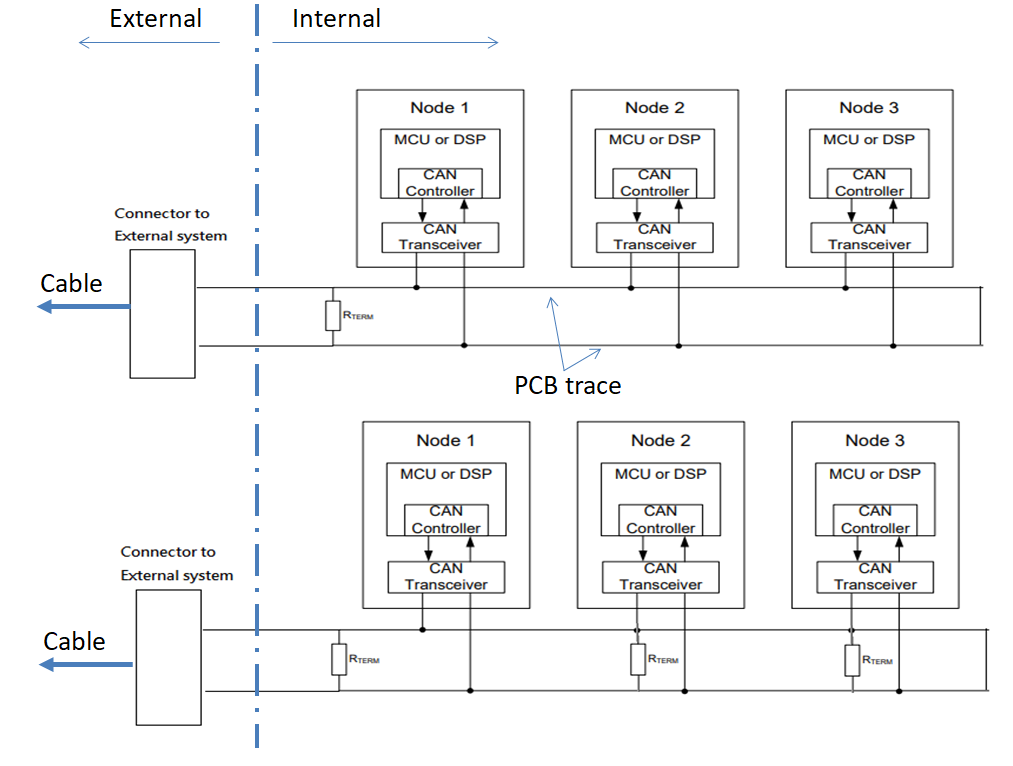Other Parts Discussed in Thread: TCAN1051-Q1
Hi Expert,
My customer is using multiple TCAN1051-Q1 in their design and wants to check what is the correct implementation of the termination resistor?
My understanding is like datasheet drawing only one set of termination resistors is needed at the connector to the external. Or would you recommend termination resistors at all transceivers?
Would you please check which drawing is the correct implementation?
Thank you.
Best Regards,
Wei-Hao


